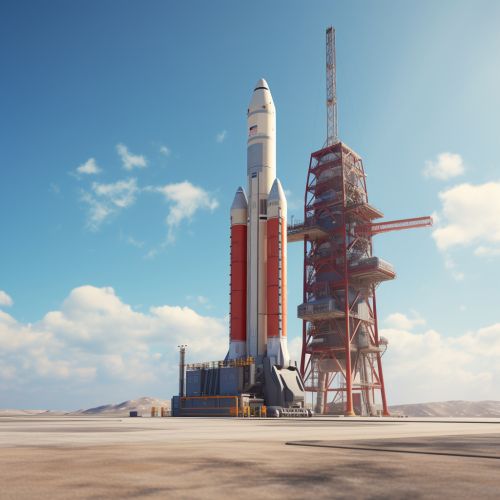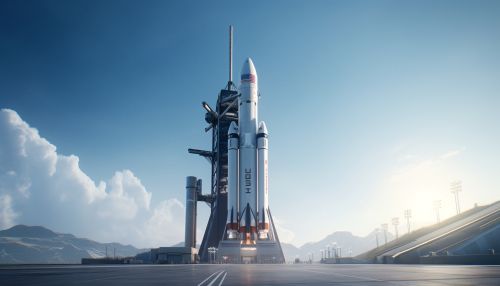Space Launch
Introduction
A space launch is the event of sending an artificial satellite, spacecraft, or other payload into space using a launch vehicle. This process involves a series of stages, including the initial launch, ascent, and insertion into an orbit or trajectory towards a specific destination. The choice of launch vehicle, launch site, and orbit type are all critical factors in a successful space launch.
Launch Vehicles
Launch vehicles, also known as carrier rockets or boosters, are used to propel payloads from Earth's surface into space. These vehicles are typically multistage rockets, with each stage containing its own engines and propellant. The first stage is ignited at launch and provides the initial thrust to overcome Earth's gravity. Subsequent stages are ignited in sequence as the previous stage exhausts its propellant and is jettisoned.


There are several types of launch vehicles, each designed for specific types of missions and payloads. These include expendable launch vehicles (ELVs), which are used once and then discarded, and reusable launch vehicles (RLVs), which are designed to return to Earth and be reused for multiple launches.
Launch Sites
Launch sites are locations from which launch vehicles are sent into space. These sites are often situated near the equator to take advantage of Earth's rotational speed, which provides an additional boost to the launch vehicle. Launch sites also need to have clear areas downrange for safety reasons, in case of a launch failure.
There are several well-known launch sites around the world, including the Baikonur Cosmodrome in Kazakhstan, the Kennedy Space Center in the United States, and the Guiana Space Centre in French Guiana. Each of these sites has its own unique capabilities and advantages, and the choice of launch site can greatly impact the success of a space launch.
Ascent Phase
The ascent phase of a space launch begins when the launch vehicle's engines are ignited and ends when the payload is inserted into its intended orbit. This phase is critical to the success of the launch, as it involves overcoming Earth's gravity and atmospheric drag.
During ascent, the launch vehicle follows a carefully planned trajectory, which is designed to maximize the efficiency of the launch and minimize the risk of failure. This trajectory is often a compromise between the shortest path to orbit (a straight line) and the path that requires the least energy (a curve known as a Hohmann transfer orbit).
Orbit Insertion
Orbit insertion is the process of placing a spacecraft into its intended orbit. This is typically achieved by firing the launch vehicle's upper stage engine at a precise moment during the ascent phase. The timing and direction of this burn are critical to achieving the correct orbit.
There are several types of orbits that a spacecraft can be inserted into, including low Earth orbit (LEO), geosynchronous orbit (GEO), and highly elliptical orbit (HEO). The choice of orbit depends on the mission requirements and the capabilities of the launch vehicle.
Conclusion
Space launches are complex events that require careful planning and execution. From the choice of launch vehicle and launch site to the ascent phase and orbit insertion, every aspect of a space launch is critical to its success. Despite the challenges, space launches have become increasingly common as more countries and private companies enter the space industry.
